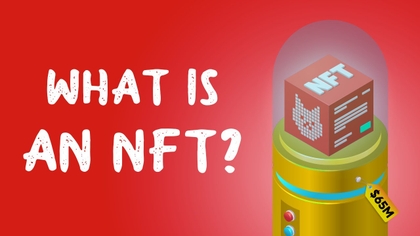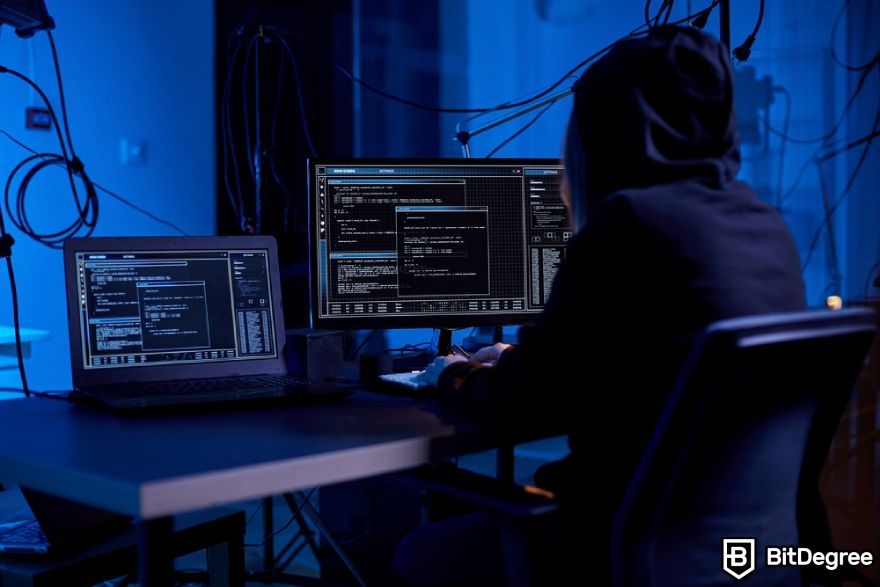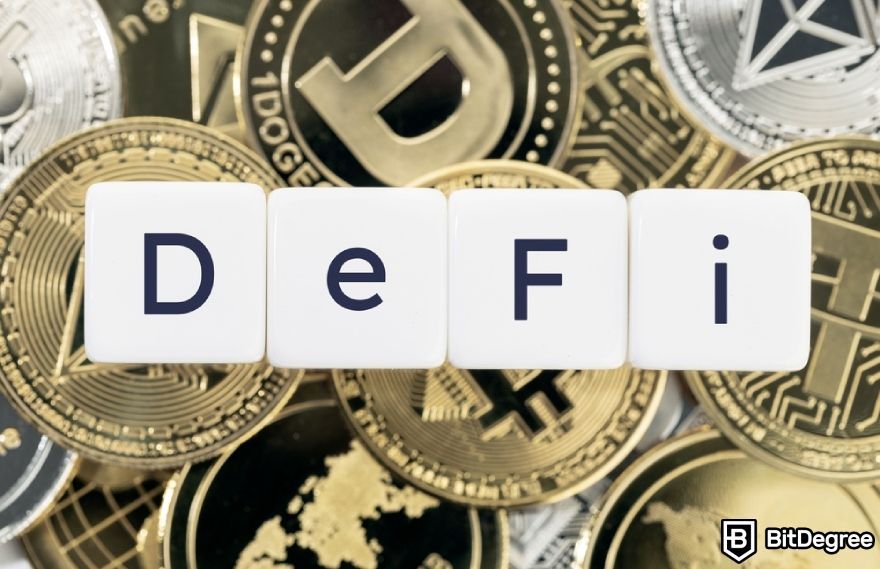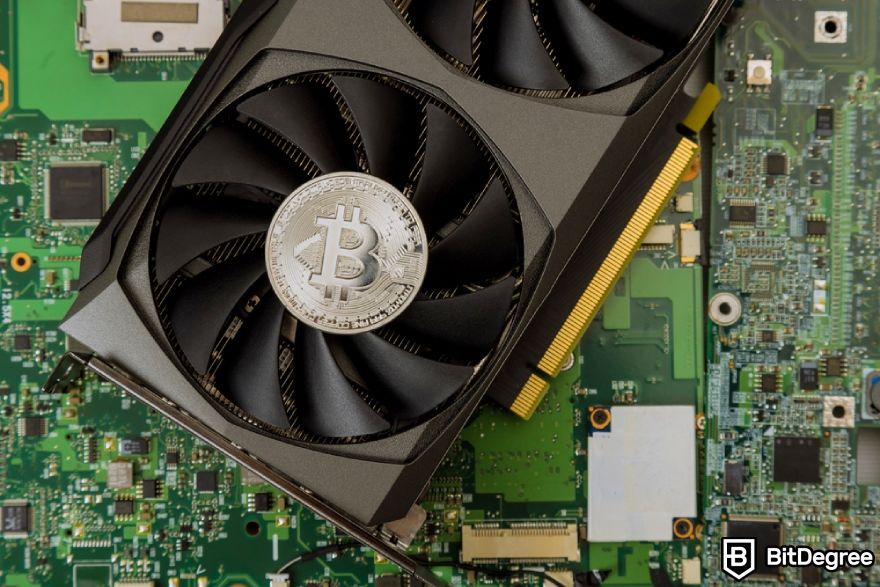Key Takeaways
- Nakamoto Consensus is a consensus mechanism designed to assure security and trust in a decentralized ecosystem, and is an indispensable part of the Bitcoin blockchain;
- The Nakamoto Consensus is fault tolerant, so the Bitcoin blockchain is well-equipped to deal with wrong and / or malicious data;
- Nakamoto Consensus' biggest challenges regard scalability and energy consumption.
Stop overpaying - start transferring money with Ogvio. Sign up, invite friends & grab Rewards now! 🎁
In the realm of technology, blockchain has emerged as a transformative concept, offering decentralized solutions for various industries. At the core of this innovation lies the Nakamoto Consensus. But what is Nakamoto Consensus, and why is it so relevant when discussing blockchain technology?
Let's do a detailed Nakamoto Consensus analysis to figure it out. Don't worry, though, I'll simplify everything so it will be easy to understand, regardless of your technical background.
As a side note, if you want to mine Bitcoin, you can always join a mining pool in a trusted platform like Binance.

Did you know?
Subscribe - We publish new crypto explainer videos every week!
What is an NFT? (Explained with Animations)


Table of Contents
What is Nakamoto Consensus?
So, what is Nakamoto Consensus? Well, the Nakamoto Consensus algorithm is a vital concept that keeps decentralization alive.
Latest Deal Active Right Now:To understand what this algorithm is all about, let's start with the name.
Nakamoto Consensus owes its name to the mysterious creator (or creators) of Bitcoin, known by the pseudonym Satoshi Nakamoto.
Yes, you guessed it right: Nakamoto is the same person (or group) who introduced the world to the first-ever successful cryptocurrency, Bitcoin. But don't worry, I won't be delving into Satoshi's identity mystery; that's a topic for another time.
Now, let's get back to the question at hand: What is Nakamoto Consensus?
At its core, it's a brilliant algorithm (or, in other words, a process that establishes a set of rules for computer-based problem-solving) that enables various participants (also called nodes) in a decentralized network to reach an agreement without having to trust a central authority.
In traditional systems, like banks, we usually trust a central authority to keep our transactions safe and ensure everything is in order. But in a decentralized world, there's no central authority to rely on.

That's where the Nakamoto Consensus comes to the rescue. This mechanism works somewhat like a democratic voting process, where all the participating nodes reach a consensus (or agreement) on the state of the blockchain.
But is the Nakamoto Consensus fault tolerant?
Yes, it is. By working together, the participants can keep the network safe, and malicious data will be ruled out.
To sum up, the Nakamoto Consensus algorithm is like a glue that holds the Bitcoin blockchain together. It allows participants to agree on the state of the blockchain without relying on a central authority, making it essential for securing the network.
Bitcoin's consensus model enabled it to become the pioneering Byzantine Fault Tolerant system (a concept further explained in the following subchapter) with organic scalability. This laid the foundation for other cryptocurrencies that now adopt different consensus models to drive their protocols.
How Does it Work?
Now that you know what is Nakamoto Consensus, let's talk about how the Nakamoto Consensus algorithm works its magic.
Imagine a group of friends trying to decide which movie to watch. They want to agree on a single movie, but everyone has their own favorite. How do they reach a consensus? Well, they might go with the majority vote.
In Nakamoto Consensus, instead of friends, a network of computers, also known as nodes, strives to agree on the next block in the blockchain.
Firstly, let's break down what a block is.
In the blockchain world, data is grouped into blocks, each containing a list of transactions. These transactions could be anything from sending cryptocurrencies like Bitcoin to storing some valuable information on the blockchain. But we don't want anyone to mess with these blocks, so we need a way to secure them.

This is where the Nakamoto Consensus algorithm comes in. It ensures that everyone in the network agrees on the same set of transactions to be included in the next block.
Nodes in the network compete to create the next block of transactions. They do this by solving a complex mathematical puzzle, a bit like a Sudoku challenge. This process is called mining. The first node to solve the puzzle gets to create the new block.
The puzzle-solving part of mining is called Proof-of-Work. It requires a lot of computational power, which means the node needs to put in some serious effort to have a chance of winning.
This process not only secures the block but also makes it extremely difficult for anyone to change the contents of the block once it's added to the blockchain. That's why blockchain is often referred to as "immutable". It's almost impossible to alter past transactions.
Once a node successfully mines a block, it broadcasts it to the rest of the network. Other nodes then verify the validity of the new block and its transactions. If everything checks out, they add the new block to their copy of the blockchain. In this way, consensus is achieved, as everyone agrees on the order of transactions.

Occasionally, multiple nodes successfully mine a block simultaneously, leading to temporary forks and multiple versions of the blockchain.
However, the Nakamoto Consensus has a simple rule: nodes should always follow the longest chain. If a longer chain emerges with more blocks added to it, nodes switch to that chain, discarding the shorter one. This ensures a single, agreed-upon version of the blockchain.
So, why is the Nakamoto Consensus fault tolerant? Or, in other words, why is it considered a Byzantine Fault Tolerant (BFT) system?
Well, that's because it's designed to function effectively and securely even in the presence of faulty or malicious nodes within the network.
In distributed systems, such as blockchain networks, the Byzantine Generals' Problem refers to the challenge of achieving consensus in the presence of unreliable or malicious nodes. These faulty nodes might send conflicting information, try to disrupt the consensus process, or behave in unpredictable ways.

Nakamoto Consensus addresses this problem by using the Proof-of-Work mechanism as a way to establish a single, agreed-upon version of the blockchain[1].
When a node successfully mines a block and broadcasts it to the network, other nodes verify the block's validity before adding it to their copy of the blockchain. This verification process ensures that only legitimate transactions are included in the blockchain.
By requiring the majority of nodes in the network to agree on the longest chain, the Nakamoto Consensus mitigates the risk of potential forks caused by the simultaneous mining of multiple blocks. In such cases, the network automatically converges on the longest chain, discarding shorter ones and ensuring consistency across the network.
The robustness of the Nakamoto Consensus against Byzantine Faults is achieved due to the computational power and economic incentives involved in the Proof-of-Work process.

The massive computational effort required for mining makes it economically impractical for malicious nodes to control the majority of the network's computing power. Attempting to disrupt the network would require an exorbitant amount of resources, making such attacks economically irrational.
However, it's essential to note that while Nakamoto Consensus is a BFT system, it provides probabilistic finality rather than absolute certainty[2].
In the context of blockchain networks like Bitcoin, once a block has been buried under several subsequent blocks, the probability of it being reverted or altered decreases significantly, making the system highly secure and reliable.
In case you want to know more, be sure to check the Nakamoto Consensus PDF original version document[3].
Incentives for Miners
There's no central authority overseeing the blockchain. So, how is the Nakamoto Consensus fault tolerant? How do we make sure people don't just cheat and tamper with the system?
Here's where incentives come into play.
The Nakamoto Consensus cleverly aligns the interests of all participants by rewarding good behavior and discouraging bad behavior. It's like a digital carrot and stick approach, but instead of donkeys, we have miners.
Miners are the backbone of the Bitcoin blockchain network. They are the ones putting in all the hard work to make it safe and secure. Now, let's understand how incentives keep them honest and hardworking.
First, let's talk about the carrot. What is Nakamoto Consensus doing to incentivize miners to dedicate their resources?

Miners are motivated to follow the rules and maintain the integrity of the blockchain because whenever they successfully add a new block to the chain, they are allowed to mint new coins and collect transaction fees. It's like getting a little bonus for being a good player in the system.
But, of course, there's also the stick – the fear of losing out. What is the Nakamoto Consensus procedure when it comes to malicious behavior?
In a decentralized network, no one can bail you out if you cheat or misbehave. If a miner tries to act maliciously, like adding invalid transactions or trying to double-spend their coins, the rest of the network will quickly reject their block.
Here's why: the Nakamoto Consensus relies on the longest chain rule you've just learned about.
When multiple miners create a block at the same time, the network will accept the chain with the most accumulated work behind it, right? So, to create a longer chain, a miner would have to redo the work of all the previous blocks, which is practically impossible and computationally expensive.

To put it short, it's much better to play by the rules and keep on adding blocks to the valid chain.
The competition among miners is what makes the system secure and reliable. They are continuously working hard to find the next block because they know that's the only way to have a shot at those valuable rewards. This competitive race ensures that the network stays robust and resistant to attacks.
How much do miners get, though? The crazy part is that the Bitcoin block reward started at 50 BTC. Of course, at that time, BTC was barely worth a penny. As of writing, the block reward is 6.25 BTC. However, due to the process of halving, it will soon be reduced to 3.125 BTC (check out the Bitcoin halving countdown).
That said, incentives in the Nakamoto Consensus create a stable harmony where each participant's self-interest drives the entire system forward. Miners secure the network, users get a trustworthy and decentralized platform, and blockchain technology keeps on revolutionizing various industries.
Pros and Cons
Of course, this consensus model, like any solution, comes with its fair share of advantages and disadvantages. So, what is Nakamoto Consensus offering, and what challenges does it bring along?
Pros
- Security. One of the main strengths of the Nakamoto Consensus is its robust security model. Through the process of mining, the consensus ensures that only honest nodes gain control over the network. This makes it extremely difficult for malicious actors to tamper with the data or perform fraudulent activities.
- Decentralization. The Nakamoto Consensus is all about decentralization. There's no central authority controlling the show. Instead, decision-making power is spread across the network's nodes, creating a trustless environment. This means no single entity has the power to monopolize or manipulate the system, promoting fairness and openness.
- Immutability. Once data is added to a blockchain using the Nakamoto Consensus, it becomes practically immutable. Since each block is cryptographically linked to the previous one, altering any past information would require tremendous computational power and resources. This gives users a high level of confidence in the integrity of the data.
- Incentives. Miners, the hardworking folks who maintain the blockchain, are rewarded with Bitcoin for their efforts. This incentive mechanism keeps the network secure and running smoothly, as miners are motivated to act in the best interest of the system to earn those precious digital coins.
Cons
- Scalability. While the Nakamoto Consensus has proven its worth, it faces challenges when it comes to scalability. As more users join the network, the number of transactions increases, and it takes longer for the network to reach a consensus. This can lead to slower transaction times and higher fees[4].
- Energy Consumption. Mining demands substantial computational power and, consequently, energy consumption. This has raised concerns about the environmental impact of blockchain networks that rely on the Proof-of-Work process, as the electricity consumption can be quite high.
- The Risk of the 51% Attack. While the Nakamoto Consensus makes it hard for bad actors to control the network, the possibility of a 51% attack remains a concern. If a single entity or a group controls over 50% of the network's mining power, they could potentially manipulate transactions and disrupt the system's integrity.
- Centralization Tendencies. Ironically, as blockchain networks grow, there is a risk of centralization emerging in mining activities. Large mining pools can concentrate significant power, potentially leading to a situation where a few entities control a substantial part of the network.
To sum up, the Nakamoto Consensus has undoubtedly revolutionized the way we think about trust and decentralization in the digital realm. Its security, immutability, and incentive mechanisms have made it the backbone of many blockchain systems.
However, the challenges related to scalability, energy consumption, 51% attacks, and centralization tendencies require ongoing research and innovation to address.
As blockchain technology evolves, striking a balance between these advantages and disadvantages will be crucial to its continued success.
Real-World Applications of Nakamoto Consensus
When anyone asks, "What is Nakamoto Consensus?" we usually think about its connection with Bitcoin, the most popular and widely known cryptocurrency. But did you know that this ingenious consensus mechanism has far-reaching applications beyond Bitcoin?
By addressing the Byzantine Generals Problem within a permissionless framework, Satoshi established a versatile consensus model applicable to a wide array of applications.
Furthermore, Nakamoto Consensus analysis has become a pivotal aspect of blockchain development and protocol upgrades. As such, it paved the way for the development of numerous consensus algorithms, such as Proof-of-Work (PoW), Proof-of-Stake (PoS), and others.
In other words, the Nakamoto Consensus laid the groundwork for today's expansive blockchain and cryptocurrency community.
So, what is Nakamoto Consensus contributing to (beyond Bitcoin)?
Decentralized Finance (DeFi)
DeFi has been one of the most significant success stories in the blockchain space, and Nakamoto Consensus is key. DeFi platforms, like lending and borrowing protocols, decentralized exchanges, and yield farming platforms, can rely on the Nakamoto Consensus to secure their transactions and validate the state of the network.

Users can participate in DeFi without the need for intermediaries, thanks to the trustless nature of Nakamoto Consensus. This decentralization fosters financial inclusion, removes single points of failure, and promotes transparency in the financial ecosystem.
Supply Chain Management
Managing supply chains can be a daunting task, especially with the complexities of global trade and counterfeit products. So, what is Nakamoto Consensus capable of doing to help with this matter?
Nakamoto Consensus can be used to build blockchain-based supply chain solutions that enhance transparency and traceability. Companies can record each step of a product's journey on the blockchain, from production to delivery, making it easier to verify the authenticity and origin of goods.
This can help combat counterfeiting and ensure that products meet quality standards, all while reducing reliance on centralized entities to oversee the supply chain.
Voting and Governance
Nakamoto Consensus has also found applications in voting and governance systems. By using blockchain technology and Nakamoto Consensus, voting processes can be made more secure, transparent, and tamper-resistant.

Decentralized voting platforms allow individuals to cast their votes directly on the blockchain, and the consensus mechanism ensures that the results are accurately recorded and cannot be altered.
This has the potential to revolutionize democracy and governance by making it easier for citizens to participate in decision-making processes.
Intellectual Property and Copyright Protection
Protecting intellectual property and copyrights can be a challenging task in the digital age. In this context, what is Nakamoto Consensus able to do to help?
Nakamoto Consensus can be leveraged to create decentralized copyright platforms that enable creators to register their work on the blockchain, providing an immutable record of ownership and creation date.
This can be crucial in resolving disputes over intellectual property rights and ensuring fair compensation for creators.

All in all, the question at hand – what is Nakamoto Consensus – cannot be answered with a simple "Bitcoin's consensus mechanism", because it is much more. Nakamoto Consensus has opened up a world of possibilities for secure, decentralized applications.
Engineers and developers are continually refining their understanding of Nakamoto Consensus analysis to build more resilient blockchain platforms.
From DeFi to intellectual property protection, Nakamoto Consensus is at the heart of many innovations. Its ability to secure trust in decentralized networks is what makes it a game-changer for blockchain technology, transforming various industries and paving the way for a more transparent and inclusive future.
Other Consensus Mechanisms
Alright, now that you know what Nakamoto Consensus is and its significance in securing trust for decentralized systems, let's talk a bit about consensus mechanisms as a whole.
As you should already know, consensus mechanisms are the backbone of any blockchain technology. They're like the referee in a game of basketball, making sure everyone on the team agrees on the score and the rules.
However, there are quite a few types of consensus mechanisms, each with its unique approach to achieving agreement. Let's go over the three most popular ones:
Proof-of-Work (PoW)
The classic Proof-of-Work... You already know how the process works – miners compete to solve complex mathematical puzzles, and the first one to find the solution gets to add the next block of transactions to the blockchain.
This process requires a ton of computational power, making it challenging and time-consuming. But it's secure because malicious actors would need to control more than half of the network's computational power (51% attack) to tamper with the blockchain, which is no easy feat.

However, do note that while many state that the Nakamoto Consensus is the same as the Proof-of-Work consensus, it's not. The Nakamoto Consensus incorporates the process of Proof-of-Work, but it also includes other mechanisms, like the longest chain rule, for example.
Proof-of-Work initially is not a consensus at all – it's actually just a mechanism for selecting the next block producer. Thus, it could be said that PoW as a consensus originated from the Nakamoto Consensus because the latter incorporates the PoW process, but they are not one and the same.

Did you know?
Subscribe - We publish new crypto explainer videos every week!
What Are Crypto Quests? EASIEST Ways to Earn Rewards Explained


Proof-of-Stake (PoS)
Now, if you're looking into consensus mechanisms, you'll definitely come across Proof-of-Stake, a more eco-friendly alternative to PoW. In PoS, validators (similar to miners) are chosen to create new blocks based on the number of coins they "stake" or lock up as collateral. The more coins they put at stake, the higher their chances of being selected.
PoS doesn't rely on solving puzzles, so it's way less energy-intensive. Moreover, PoS encourages participants to play by the rules, as malicious behavior can lead to the loss of their staked coins.
Find out more about the difference between PoW and PoS in BitDegree's Crypto 101 Handbook.

- Secure and reliable
- Accepts fiat currencies
- Lots of trading options
- Reputable exchange
- Accepts fiat currencies
- Offers various trading options

- Huge trading variety
- Regulation-compliant around the globe
- Fair trading fees
- Beginner-friendly
- A wide array of features
- Vast number of different crypto coins & tokens

- Beginner-friendly
- Secure
- Decent trading and withdrawal fees
- Crypto.com Visa Card
- Automated tools & bots
- Ecosystem synergy with CRO
Delegated Proof-of-Stake (DPoS)
Now, Delegated Proof-of-Stake is an iteration of PoS. In it, stakeholders elect a few delegates to act on their behalf. These delegates are responsible for validating transactions and producing blocks.

The real kicker is that stakeholders can vote to remove a delegate if they misbehave. DPoS aims for more efficiency and scalability by reducing the number of participants responsible for reaching consensus.
So, there you have it! A quick rundown of three of the main consensus mechanisms driving the blockchain world.
Besides those mentioned above, though, there are many more ways to reach consensus, such as Proof-of-Authority (PoA), Proof-of-Importance (PoI), Proof-of-Burn (PoB), Proof-of-Reputation (PoR), and various hybrids that combine different consensus mechanisms in unique ways.
As blockchain technology continues to develop, new consensus mechanisms emerge, each tailored to meet specific needs and challenges. Understanding consensus mechanisms is vital to grasp the inner workings of blockchain systems and appreciate the security and decentralization they bring to the table.
Conclusions
So, what is Nakamoto Consensus? I hope you already know how to answer that question with confidence. After all, the Nakamoto Consensus is an innovation that kickstarted the development of other blockchain consensus mechanisms and, as such, cannot be taken for granted.
The concept, named after the mysterious creator of Bitcoin, has become the backbone of numerous cryptocurrencies and blockchain systems. Its power lies in the fact that it ensures security, immutability, and trust in a trustless environment, as it's plain to see on the Nakamoto Consensus PDF original version.
By the way, while the Nakamoto Consensus and other consensus mechanisms work to ensure security and trust, make sure to pick reputable exchanges like Binance, KuCoin, or Kraken for your trading journey. They also seek to make the crypto world secure and trustworthy.
The content published on this website is not aimed to give any kind of financial, investment, trading, or any other form of advice. BitDegree.org does not endorse or suggest you to buy, sell or hold any kind of cryptocurrency. Before making financial investment decisions, do consult your financial advisor.
Scientific References
1. N. Stifter, A. Judmayer, P. Schindler, A. Zamyatin, E. Weippl: 'Agreement with Satoshi – On the Formalization of Nakamoto Consensus';
2. L. Ren: 'Analysis of Nakamoto Consensus';
3. S. Nakamoto: 'Bitcoin: A Peer-to-Peer Electronic Cash System';
4. N. Sohrabi, Z. Tari: 'On The Scalability of Blockchain Systems'.









